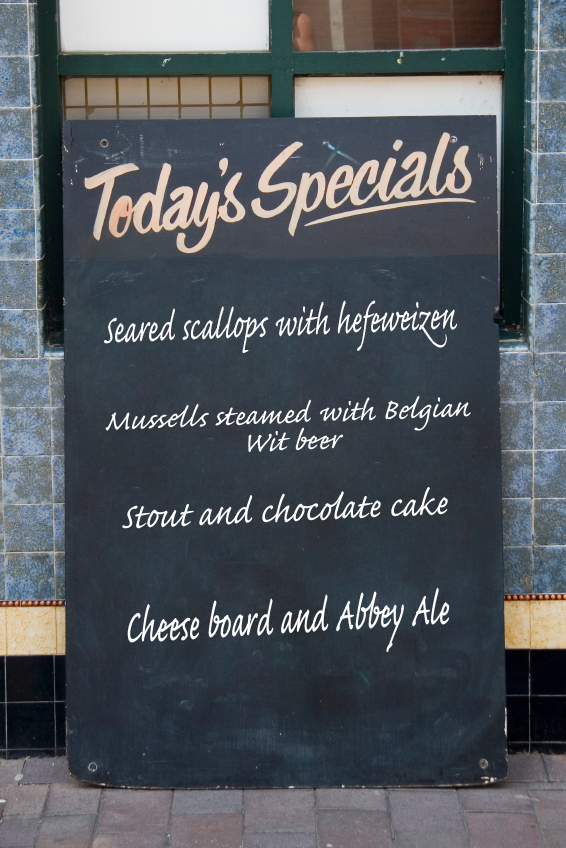
Bring me the beer list
It’s a fairly common experience for the beer drinker. Visiting a nice restaurant and being handed an impressive leather-bound volume with “beverage list” in gold lettering outlining a vast selection of wines from Australia and around the world. Champagnes costing up to and over $700-a-bottle headlining a studied offering of dozens of styles and varietals with the cheapest–or should that be least expensive–hovering above the $40 mark. Then there follows an array of dessert wines, ports, fortifieds and other dauntingly-named types of grape juice provided for the discerning diner’s post-prandial enjoyment.
But if you want a beer it’s nowhere to be seen in the beverage list. Instead, it’s usually tucked down in a corner on the back page of the menu, the drinks equivalent of the kid’s menu. The list itself usually runs to about ten entries, with the domestic beers dominated by whichever of the big breweries paid for the restaurant’s signage and beer taps. This is followed by an ‘imported’ list in which the majority are foreign brands brewed under licence in Australia.
Over the last three decades the selection of the actual brands has changed but the beers themselves are pretty much interchangeable: one or two light or mid-strength pale lagers, one or two domestic full-strength pale lagers, a low-carb very pale lager, one or two ‘premium’ Australian pale lagers and a couple of international pale lagers.
Now, there is nothing wrong with the common pale lager. They are cold and they are refreshing, they are easy-drinking and sessionable (almost to a fault if you heed the current health warnings). These lagers are the liquid backdrop to manly congregation, whether it be drinks after work, pushing sausages around a barbie plate or a weekend of watching sport. But, for all of that, they are largely uninspiring. And with the vast majority of Australians believing that pale lager is pretty much all there is to beer–and convinced by beer marketers that there actually are significant differences between the stock standard Australian lagers–there is little pressure for this to change.
This also explains why beer has become the Rodney Dangerfield of beverages; a fun, lovable buffoon standing around wondering why it can’t get no respect.
Australia has come a long way over the last thirty years in almost every aspect of the culinary arts. Sophisticated dining has evolved way beyond the classic ‘70s fare of a prawn cocktail, steak Diane and crepe Suzette. Today restaurants can’t get away with serving flagons of vin ordinaire and they employ baristas rather than stewing a pot of drip-filtered coffee uninvitingly near the cash register. Yet, when it comes to beer, our eateries are still largely stuck in the era of the safari suit, three-quarter sideburns and Valiant Chargers. With the amazing array of foods, flavours and dining options available, beer is still meat and three veg.
Beer can be perfectly paired with an incredible range of contemporary restaurant dishes, sometimes providing an even better match than wine–especially with desserts. It’s a strange thing but wine makers and chefs know about the incredibly diverse flavours of beer–many winemakers claim that it takes a lot of good beer to make good wine–but this isn’t reflected in our beverage lists.
Enough is enough. It is time to start lopping stars off restaurants that treat beer as an after-thought. Even allowing for a fairly small beer list we can do much better than a careless selection of near identical lagers and still please everybody.
Beer lovers, it’s time to make a stand. Stand tall, stand proud and say, “Bring me the beverage list. I want a beer.”




